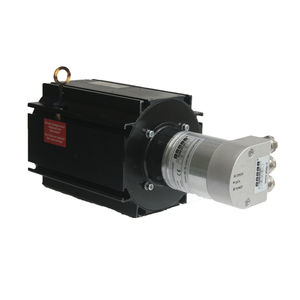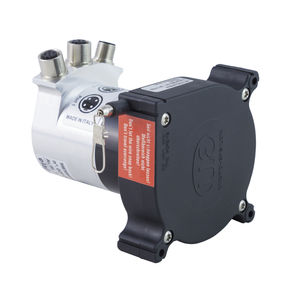
Draw-wire position sensor HPS seriespotentiometeranalogwith potentiometric output


Add to favorites
Compare this product
Characteristics
- Type
- draw-wire
- Technology
- potentiometer
- Output signal
- analog, with potentiometric output
- Measurement object
- metal
- Protection class
- IP64
- Applications
- industrial, OEM applications
- Other characteristics
- high-precision
- Measuring range
Min.: 250 mm
(9.84 in)Max.: 8,000 mm
(314.96 in)
Description
Elap linear wire potentiometers series HPS are ideal for industrial applications that require high accuracy and a measuring length of up to 8 m. The product is supplied with strokes ranging from 250 to 8,000 mm, and 5 KOhm resistance. Analogue output 4-20mA or 0/10Vdc are also available.
This device is highly protected against environmental agents, and it is easy to install.
The types HPS-M, HPS-L and HPS-S are different for each measuring stroke and mechanical size.
Series HPS-S: 250, 500, 1000 mm
Series HPS-M: 500, 750, 1000, 1250, 1500, 2000, 3000, 4000 mm
Series HPS-L: 3000, 4000, 5000, 6000, 8000 mm
Technical specifications
* Resistance 5 KOhm ±10%
* Linearity ±0,25%
* Max travel speed: 0.5/1 m/sec.
* Starting torque on spring: strokes up to 1250 mm = 600 g
strokes from 1.5 to 4 m = 1000 g -
Over: 2200 g
* Stainless steel wire SUS304 nylon coated, diameter 0.6/1 mm -
Breaking load 16/60 Kg.
* Operating temperature -20°C ÷ 70°C (0°C ÷ 70°C with analogue output) - Relative moisture: 35%-90%
* Connections: cable lg. 1 mt (type HPS-S 50 cm)
* Protection degree IP64 (type HPS-S: IP50)
Catalogs
No catalogs are available for this product.
See all of ELAP‘s catalogsExhibitions
Meet this supplier at the following exhibition(s):

Related Searches
- Angular encoder
- Incremental encoder
- Incremental rotary encoder
- Digital panel meter
- Absolute rotary encoder
- Panel-mount panel meter
- Position transducer
- Solid-shaft rotary encoder
- Hollow-shaft rotary encoder
- Optical rotary encoder
- Industrial rotary encoder
- Linear position transducer
- Magnetic rotary encoder
- IP65 rotary encoder
- IP67 rotary encoder
- Displacement transducer
- Linear displacement transducer
- Aluminum rotary encoder
- Compact rotary encoder
- Analog output position sensor
*Prices are pre-tax. They exclude delivery charges and customs duties and do not include additional charges for installation or activation options. Prices are indicative only and may vary by country, with changes to the cost of raw materials and exchange rates.




